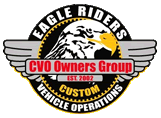I can see your point and you state it very well. I think I will go with what I see when I have my hands covered in oil and I can see the specks of aluminum floating around and stuck to my hands. Only to see the same thing we here have seen, R&R has seen as well as many others. I am not against a plain bearing set up , they work fine in a OHC engine where you have 25 lbs of seat pressure, no flexing of the mounting surface like in a HD. Why do you think S&S went to o-rings on the cam plate? It was not that they where unable to machine the cam plate flat, or that the case mounting surface was not flat. The amount of distortion that a case goes through. Flex's the cam plate allowing oil to spray inside the cam chest. When that case moves the cast plate flex's and then the cam , starts to wear unevenly. As far as HD trying to make the engine quiet, fine more power to them. I myself would rather have a engine that I know will go the milage trouble free with a bit more noise than the alternative.
The OHC engine that I was thinking about is the VRod. This machine runs around 65 pounds of seat pressure per valve in stock configuration. The modified VRod heads that Zippers and Tilley’s 1320’s run have heavier springs. My guess is that these configurations have seat pressures running at least 20% higher, somewhere near 80 pounds. With twice the valve count plus a 30% to 40% increase in the average engine speed over the Twin Cam and you have substantial loading of the VRod’s plain aluminum cam bearing.
The diameter of the Twin Cam’s cam bearings is substantially larger than the VRod; although I can’t say for sure about the total surface area per cam. Bottom line is that there are plain bearing valve trains running reliably under substantial loads. It is not at all unreasonable to expect that an aluminum plain bearing could be designed to handle the load of the Twin Cam’s valve train. All that is left now is to stir in some more time and mileage to sort this out. If these new cam bearings are as prone to wear as has been suggested, the cam plate issues should make the 110 head gasket problems look like a non event. As previously posted, my bet is that this cam plate arrangement will substantially improve the long term reliability of this assembly; time will tell.
Regarding the crankcase and camplate flex resulting in oil pressure loss and uneven camshaft wear: One item conspicuously missing from the list of issues related to the overflex of these components is their structural failure. It is my understanding and experience that fatigue and breakage occurs when cast aluminum is exposed to repeated overflex cycles; it is the nature of this material to break when repeatedly overflexed. Cast aluminum is an extremely reliable material when coupled with a rigid design for the intended application.
During normal operation, components are loaded, stressed, heat cycled; they grow, shrink and they move around. The cyclical loading and other stresses are normally accounted for in the design and choice of materials of the components. The bold claim that the crankcase and camplate design is inadequate for the average street machine application seems overstated. The Twin Cam is in its 10th model year of production with no apparent long term structural issues with these components; never mind the relatively diminutive construction of the Twin Cam’s predecessors which ran successfully for many decades under similar loads and conditions.
Let’s assume that for a specific application the projected stress cycle limit of the OEM cam plate is an arbitrary number equivalent to 250,000 miles. The cam plate is replaced in the same application with a structurally heavier piece that will theoretically tolerate cyclical loads equivalent to 350,000 miles; where is the added value? The camplate will reach its service wear limits long before it reaches its structural limitations; these things are going to wear out long before they break.
IMHO, one of the drivers for over engineering a product like this is to differentiate the product from the OEM or other manufacturers. Without the perceived value of a more robust design, the camplate would be much more difficult to market successfully.
When the smoke clears at the end of the day, if one way or the other your needs and expectations have been met, I’m thinking that you have accomplished your mission.
As always, these ramblings are JMHO.
djkak
 Author
Topic: Baisley LMR-02 oil spring (Read 26322 times)
Author
Topic: Baisley LMR-02 oil spring (Read 26322 times)

